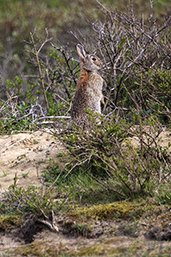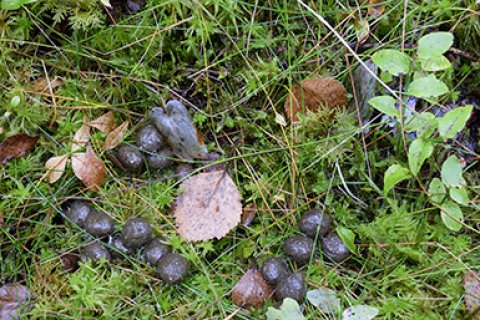Rabbit dung increases plant biodiversity

The biodiversity of plants is affected by the composition of manure, environmental scientists from Utrecht University and the Free University of Brussels write in Nature Scientific Reports. Different types of manure contain large differences in nutrient concentrations. The composition of rabbit manure, for example, is quite different from that of large grazers.
Spring has started and farmers and gardeners started fertilizing their land again. Instead of artificial fertilizer, raw manure from grazers is increasingly being used to increase the yield of crops. But which manure is the best; from cows of horses or perhaps from sheep or rabbits?
Manure is often seen as the same thing
In nature management it has long been known that large grazers play an important role in the cycle of nutrients, such as nitrogen and phosphorus, and thus also influence the growth of plants. In addition, these grazers are often selective in which plant species they eat and which they do not, and therefore have a major influence on the composition of the vegetation. The latter is relatively well known, but how plant communities are being influenced by this is actually largely unknown. The role of manure in nature reserves is often seen as the same thing.
Different composition
Research carried out by the Vrije Universiteit Brussel and the Copernicus Institute of Utrecht University, however, shows that the composition of herbivores' manure varies greatly in the concentrations and proportions of carbon, nitrogen and phosphorus. This applies both to the large numbers of grazers in the African savannah and to the herbivores from our regions, such as deer, bison, wild boar and rabbit. These differences between herbivores are caused by the plants they eat and by their digestive system - ruminants or not.
Greenhouse experiment
It now appears that manure quality also has an effect on plant biodiversity. The researchers collected manure from rabbits, fallow deer, horses, cows and wisents in the National Park Zuid-Kennemerland, a nature reserve in the dunes near Haarlem. This manure was used in a greenhouse experiment, in which a low or high dose was administered to pots each containing the same six plant species, two grass species, two leguminous plants and two other herbs.

Overgrown by red clover
In particular, the plant communities that received manure from wisents, cows and horses grew considerably and were increasingly overgrown by one of the leguminous plants - red clover - at the high doses of manure. But with rabbit manure this was much less the case, so at the end of the experiment the resulting diversity of the plant community was much higher.
Nitrogen to phosphorus ratio
This diversity was directly linked to the ratio of nitrogen and phosphorus in the manure. For manure with relatively little nitrogen, such as bison, cow and horse manure, the red clover took advantage of its symbiosis with nitrogen-binding bacteria, allowing this plant species to extract nitrogen from the air. For rabbit manure with a higher nitrogen-phosphorus ratio, this was much less the case.
Key species for maintaining diversity
The results of this research, published in the open access journal Scientific Reports, show that the composition of the vegetation strongly depends on which herbivore the manure originates from. For the Kennemerland dunes, this research underlines the importance of the rabbit, a key species that does not only contribute to a bio-diverse dune landscape through its digging and gnawing activities, but also through its excrements.
Researchers
- Elena Valdés-Correcher (Vrije Universiteit Brussel, Department of Biology)
- Judith Sitters (Vrije Universiteit Brussel, Department of Biology)
- Natacha Brion (Vrije Universiteit Brussel, Analytical, Environmental and Geochemistry)
- Harry Olde Venterink (Vrije Universiteit Brussel, Department of Biology)

